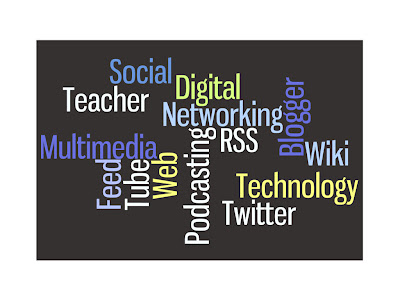Exploring video sharing sites this past week was thoroughly enjoyable! Sites such as YouTube and TeacherTube can offer up online consumers video sharing and video viewing in educational capacities, consisting of a wide range of subject material for all grade levels. I found a couple distinct differences between incorporating video sharing sites versus photo sharing in an instructional setting. First, students and teachers are able to freely access both YouTube and TeacherTube sites in my school (something which was not the case for the photo sharing sites). Also, I am more familiar with using the video sites to compliment or supplement instruction in the classroom and have used video sharing sites much more so than photo sharing sites.
One little glitch I experienced that caused a few days of grief was trying to upload a video into my blog. I could not find the 'edit html' button and kept receiving error messages in the process. I used Blogger help, and thought the instructions were outlined in a straight-forward manner. It took a couple days to figure out that I was missing a default command in my global compose settings. Life was good after the setting was changed and saved.
I invested many hours this past week sifting through both sites and really value the multimedia perspective video can bring into any classroom. Both sites are easy for users navigate through and all viewers will find a plethora of video choices from a vast array of subject areas. The only negative experience researching this topic was the significant difference between the amount of time it takes to load and play a video on a school computer compared to the time it took on my home laptop. much my researching for appropriate videos to compliment lessons at school are usually conducted at home.
I discovered that YouTube is not only used for video sharing but also an avenue for video blogging as another outlet for young people to live their lives 'virtually'. According to Wikipedia video blogging (also called vlogging) is when blogs are embedded into a video format (Wikipedia, 2008). Video blogging has become more popular over the past couple years with regular bloggers. Many vloggers on YouTube have sequential numbering included in their titles, making the process of following video blogs that much easier. I conducted a search of Web 2.0 vlogs on YouTube and was pleasantly surprised to have an over abundance of video blogs to view. My viewing choices included titles such as ‘Web 2.0 is not the future of education’ to ‘Web 2.0 and its benefits for the students’ education’. Comparing those contrasting titles alone tells me that many people have much to share through video blogging. The interesting possibilities are endless when it comes to thinking of ways that students can incorporate video blogging into their learning. This format would lend itself to be a creative format for students to record an inquiry project from start to finish.

There are a couple features about TeacherTube that I appreciate as an educator. The top menu bar on the screen displays helpful links to guide users through the most popular, most viewed and favourite videos on the site. This quick reference can help educators see what others find worthy of viewing. Through the online sharing format, TeacherTube continues to meet one of their goals of trying to promote the online educational sharing of instructional videos.
Last year in the spring my school hosted a school-wide ‘Literacy Week’ to promote literacy, authors, and reading. During this week I hosted a Comic Café to launch new comic books and graphic novels purchased for the school library collection. As I promoted this genre throughout various grade levels, I discovered that there was an enthusiastic fan base of graphic novel readers in the school. What was really interesting was that a couple of students indicated to me that they were excited about some of the new graphic novel series added to the school collection because they were fans of the manga videos posted on YouTube. Posted here you will see one short video excerpt from the original manga series Fruits Basket. I had no idea that YouTube contained videos to compliment the Japanese print series. Since learning from my students that manga videos were available on YouTube I began using short video clips to promote various books, authors and reading.
Exploring around Beth’s Thoughts on Technology in the Classroom blog, I found one past post where she had posted a wiki listing of all of her favourite videos, podcasts and slides to share regarding 21st century learning and technology. What a wonderful idea to have a narrowed list of quality videos that have been viewed and approved of by a leading educational technology expert!
Some other video sharing sites I chose to explore this week include:
One World TV
This site based out of the UK is an online video sharing community focused on climate change and global justice.
Big Think
Contains accessible interviews from today’s leaders, academic thinkers and celebrity activists.
Yahoo! Video
Not only is Yahoo a popular search engine, but also host to an online video sharing community.
Yes, there are plenty of choices to make when it comes to video sharing and video viewing sites personally and professionally. Educators must take time to determine which online communities are appropriate to use and which sites work best for potentially uploading and/or sharing educational video experiences at school.
Wikipedia The Free Encyclopedia. (2008). Video Blogging. Retrieved
September 26, 2008 from http://en.wikipedia.org/wiki/Vlog







